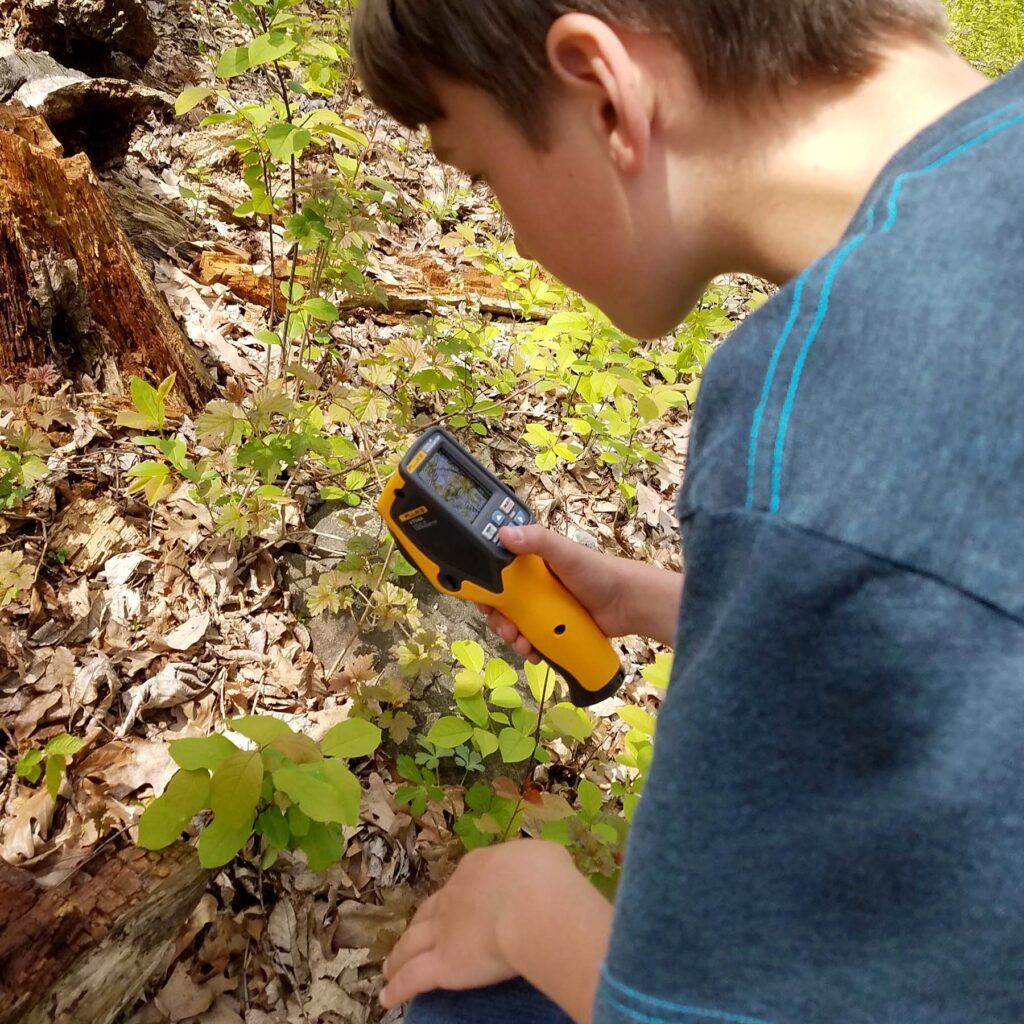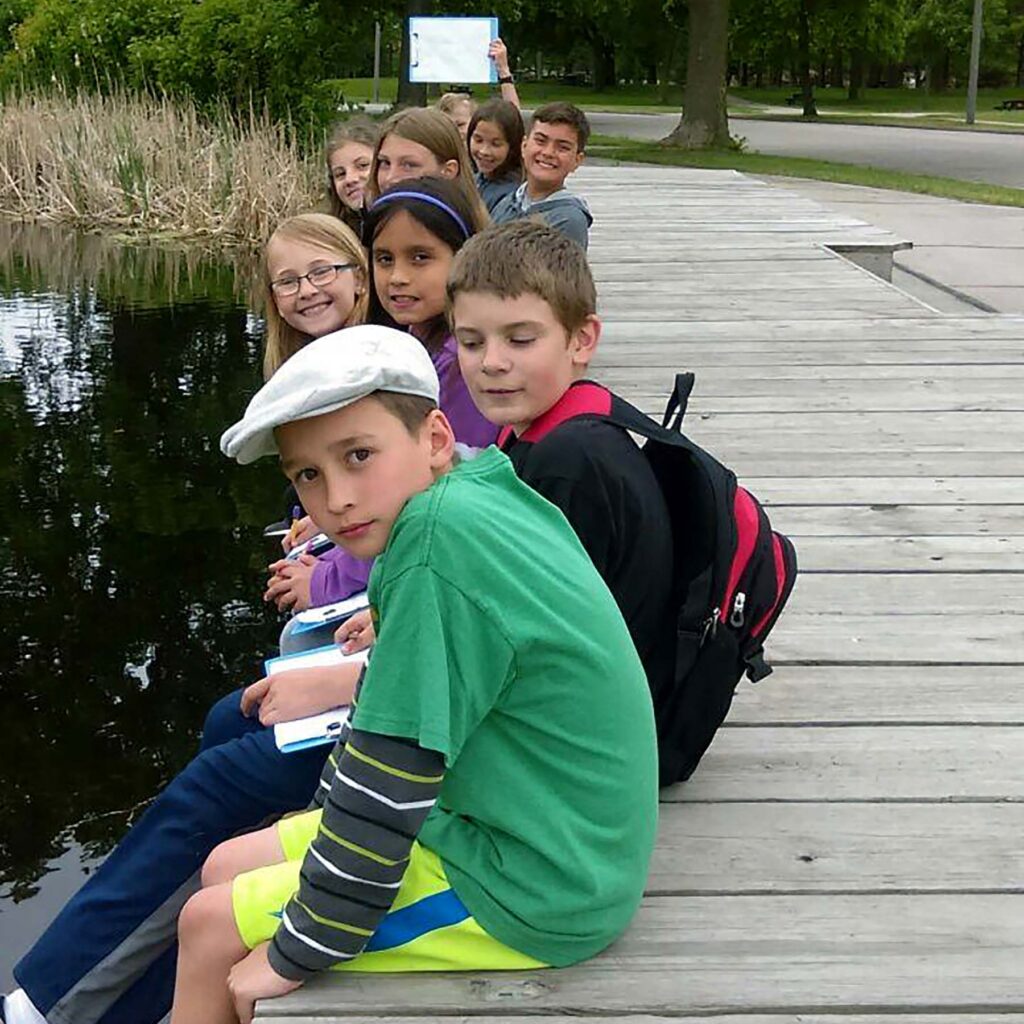Encouraging Creativity in Children
Imaginative Learning is Necessary to Child Development
Remember how much fun it was when you were a kid to just go outside and play? No agenda, no toys nor even props required. Only creative opportunity.
Seemingly meaningless activities like these are crucial to a child’s development. This includes unstructured creative play – like picking up a stick and using it as a knight’s sword or imagining a simple stone to be a powerful race car. Imagination is what gives us the creativity and problem-solving abilities we need as adults.
Creative thought has the power to turn the mundane into the magical. It’s what turns a bathtub into the deep blue sea or a large pile of snow into Mt. Everest. The importance of imaginative learning in child development is undeniable.

As educators, parents and caregivers, it’s important to encourage imaginative learning and play in children as much as possible. I’d argue we should encourage it in adults too. Taking a moment to view the world through a child’s eyes can bring back to us the joy and wonder our imaginations bring!
Why is Imaginative Learning so Important?
Imaginative learning is when children use their imaginations to play and learn without rules or structure. It is an essential part of any childhood. It can help develop abilities from decision-making skills to social skills. Our imaginations even inform our behaviors.
Logic will get you from A to B.
Albert Einstein
Imagination will take you everywhere.
One of the most obvious benefits of imaginative learning and play is an enhanced creative ability. Imaginative learning gives kids the skills they need later in life for creative problem solving. Creativity in children aids in the discovery and invention of new things. It helps children understand various types of art and to visualize characters and situations from books and movies.
All sorts of creative problem-solving abilities are used during imaginative play. Children practice selecting materials to build with or they might create something new from common household objects.
Additionally, problems may arise during imaginative playtime. Two children may want the same role in a game or something might go wrong in their make-believe scenario.
These types of interactions help develop the cognitive abilities and skills we use throughout our lives.

Imaginative learning allows children to experiment with language and vocabulary. With practice, they learn how to appropriately use words and learn the meaning behind them. This also gives children an opportunity to practice listening skills and how to communicate with their peers. Such practice strengthens connections between the written and spoken language.
Finally, the most important ability that imaginative learning helps to develop is empathy. Engaging in role-playing gives us the capacity to understand or feel what another person is experiencing from within their frame of reference.
The Importance of Role-playing
Imaginative learning introduces the concept of role-playing into our lives. When a child is pretending to be someone or something else, they’re engaging in imaginative learning and playing. This type of playtime helps kids make sense of the world by practicing skills and interactions they observe from adults.

When I was a kid my favorite role-playing game was private detective. I loved being an undercover anything. I would always pretend I was a boy. I think it’s because when growing up in the 70s and 80s, all the spy and detective shows had a male lead star. Except for, of course, Charlie’s Angels.
I would picture myself wearing a trench coat and bucket hat, like what plain clothes cops might wear. On the rare occasion, I’d trade in the bucket hat for a deerstalker accompanied by a smoking pipe.
In most versions, it would be night time, usually summer, and it was always raining. I would make-believe I was following someone through the darkness, streetlights reflected around us in the rain puddles. In my head, I’d be sneaking in and out of the shadows from doorstep to doorstep. In my house, I’d somehow stretch the tiny hallway down the center of our starter ranch to match the fantasy.
Engaging in imaginative play allows children to act out situations they see every day. They may impersonate parents, other people they see, or characters from their favorite comic book.
Five Tips to Igniting Passion
As adults we have been forced into a world of responsibility and practicality. How we live and experience the world is often dictated to us. Our realities are often shaped by our jobs and how much money we have.
Somewhere along the way, many of us have lost our connection to passion and purpose. Where there was once passion, now lives survival and responsibility. Dreaming of what can be allows us to tap into our imaginations again. It reminds us what it feels like to be passionate about something. Believe it or not, it is possible for adults to be both passionate and responsible!
There are simple things we can do now to help children (and adults too!) maintain their connection to their passions and purpose in life. Below are five strategies to encourage a lifetime of creative and imaginative thinking.
1. Spend lots of time Outdoors.
Spending lots of time in nature is crucial for the healthy development of our imaginations. Moreover, imaginative learning creates great opportunities for kids to be active and to get daily exercise. Additionally, unstructured play outdoors helps young children learn to self-regulate their movements and behaviors.
Imaginative learning gives younger children lots of practice for both gross and fine motor skills. Gross motor skills control whole-body movements. Activities like climbing and jumping helps develop these. Fine motor skills control smaller, more precise movements. These can be developed through activities like writing in dirt with sticks, using gardening tools and sketching with sidewalk chalk.
The best part about the great outdoors? The cost is free.
There are no rules of architecture
Gilbert K. Chesterton
for a castle in the clouds.


2. Make Time In Every Day For Unstructured, Unsupervised Creative Play.
Structured play, also known as goal-oriented play, generally involves using logic to solve problems, while unstructured play or free play is creative and open-ended. Both are necessary to your child’s development and will cultivate traits encouraging lifelong learning.
However, in the day and age of screens and over-scheduling, children are losing the opportunity for critical unstructured play. Unstructured, unsupervised creative play allows children to make independent choices, to be bored, to develop curiosity and to explore possibilities.
Find a safe environment where your child can explore and reflect without constant adult supervision. No one needs to be entertained every moment of every day!
3. Significantly Limit Your Child’s Screen Time.
Screen time is an unavoidable reality of modern childhood, with children of every age spending hours upon hours in front of tablets, smartphones and televisions.

Too much screen time impedes the development of the abilities caregivers are so eager to encourage. The ability to focus, to concentrate, to be attentive, to sense other people’s moods and to communicate with them, to build a large vocabulary. Screen time harms all of these.
According to recent research, 97% of youth play video games; nearly three-quarters of them have an online social networking profile (Facebook, Instagram, Snapchat, etc.); 91% have a mobile phone; and the typical teen sends an average of 10 text messages per hour!
It’s no surprise caregivers repeatedly hear their children complain about how boring school can be. Compared to its competition, formal education doesn’t even come close to holding a student’s attention. Experts are beginning to believe children are even exhibiting some key signs of addiction.
4. Power Off Regularly.
To help a child understand clear boundaries between the virtual world and the real world, it’s necessary to take regular breaks from devices and screens. This is more than just limiting screen time. This is actually powering devices off.
Store all devices in a neutral location each night away from your child’s bedroom. Make sure you know they are stored away each night and not going to bed with your child. Depending on your child, you might even consider keeping devices in your bedroom at night.
5. Give Your Child Specific And Authentic Feedback.
There are times when we have to dig deep to find an appropriate feedback response that will not discourage a child’s learning. Rather than “good job” or “you’re so smart” say, “you must be so proud.” or “I can tell you put a lot of effort into __.” Giving specific and authentic praise supports your child’s development. That is, the belief that intelligence is not fixed but instead can be enhanced by hard work and effort.
Try to take things one day at a time. Little changes today can have big impacts on tomorrow. Allow your child to make mistakes and try to keep in mind that you don’t have to fix everything for her or him. As an adult, you can make mistakes too! We all do.
Do you have more suggestions for Imaginative Learning? Do you have a suggestion for another blog topic? Please send me an email with your ideas or experiences at grumble.services@gmail.com.
If you find this article helpful, please share it. Please join us, if you have yet to do so. Subscribe below and receive articles like this one in your email box weekly. Thank you!
Read More: What is The Unschooling Movement?
All Rights Reserved • © 2021 Grumble Services LLC • grumbleservices.com

References & Read More:
5 Reasons Imagination Is More Important Than Reality
By Lamisha Serf-Walls, December 2017
10 reasons why Finland’s education system is the best in the world
The Importance of Imagination in Child Development
What If Schools Viewed Outdoor Learning as ‘Plan A’?



